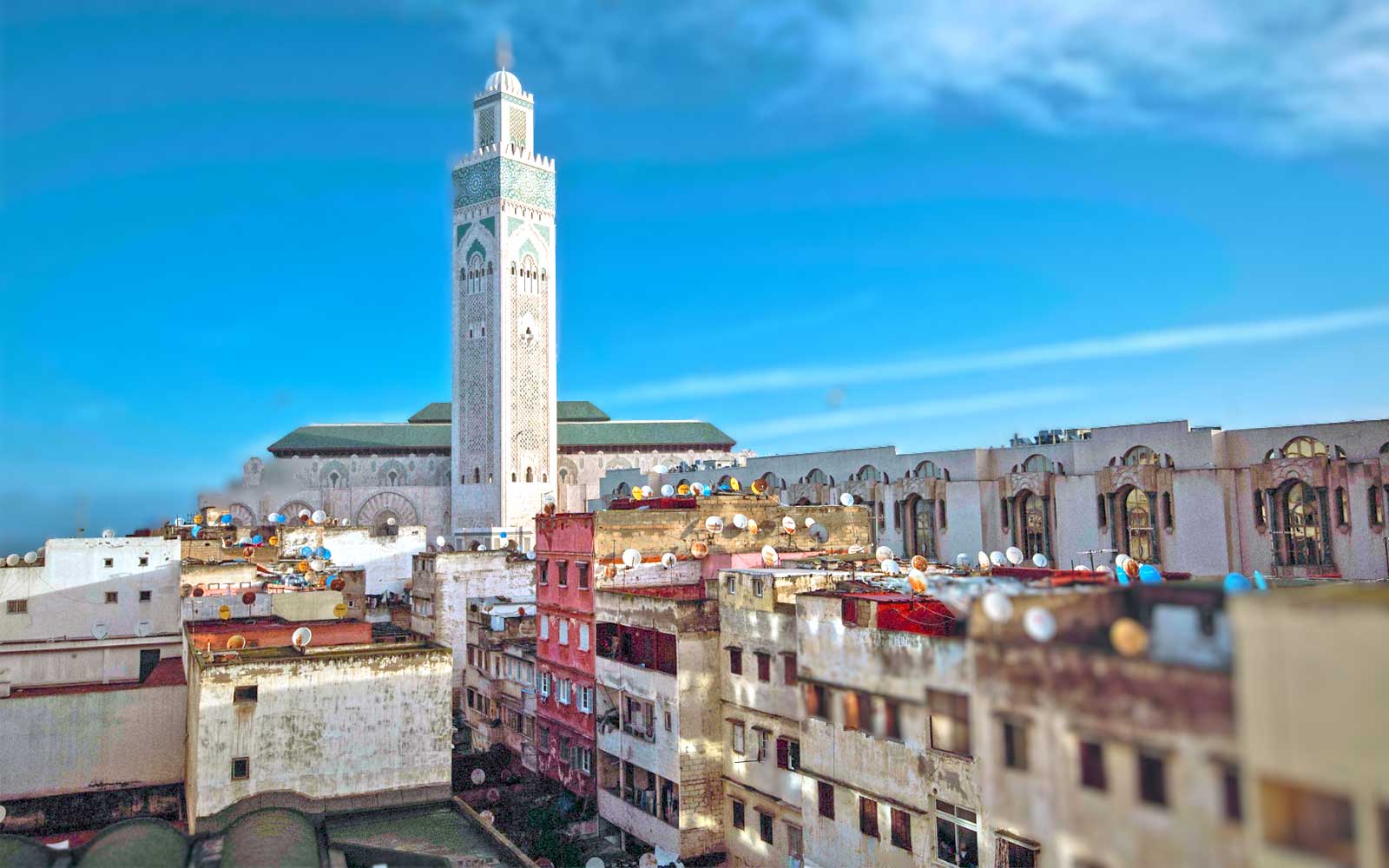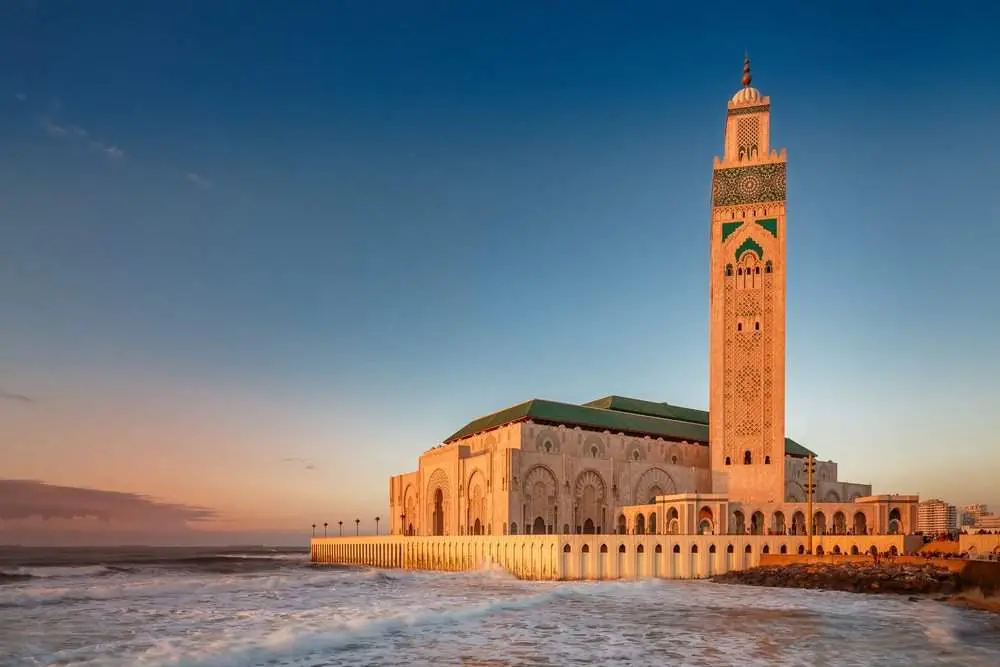
Casablanca, Morocco’s largest city, is a captivating blend of modern architecture, rich history, and vibrant culture. Often overlooked in favor of the more traditional allure of Marrakech or Fes, Casablanca offers a unique Moroccan experience. This guide will equip you with everything you need to plan your trip, from navigating its bustling streets to discovering its hidden gems.
A Glimpse into Casablanca’s History:
Casablanca’s history stretches back to the 7th century BC, when it was founded by the Berbers as "Anfa." Over centuries, it was influenced by Phoenicians, Romans, and Arabs. The Portuguese captured the city in 1468, destroying Anfa and rebuilding it in 1515, naming it "Casa Branca" (White House). It changed hands several times, eventually falling under Moroccan rule.
/GettyImages-625321358-58e24c335f9b58ef7e5529e7.jpg)
Related Articles about Casablanca Unveiled: Your Comprehensive Guide to Morocco’s Modern Metropolis:
- Journey to the Heart of Eurasia: A Comprehensive Guide to Traveling in Russia
- Abu Dhabi: A Glimpse into Timeless Grandeur and Modern Marvels
- Chile: A Tapestry of Extremes and Unforgettable Stays – Your Ultimate Travel Guide
- Bangkok: The Eternal City of Angels – A Comprehensive Travel Guide
- ¡Hola España! Your Ultimate Guide to an Unforgettable Spanish Adventure
The city’s modern transformation began in the early 20th century during the French Protectorate. French architects and urban planners reshaped Casablanca, creating the city we know today. This period left an indelible mark, visible in the Art Deco architecture that graces its boulevards. Casablanca played a significant role during World War II, hosting the Casablanca Conference in 1943, where Allied leaders Roosevelt and Churchill met to plan their strategy.
Since Morocco’s independence in 1956, Casablanca has become the country’s economic powerhouse and a major port city, a bustling metropolis that balances its historical roots with modern aspirations.
Top Attractions: A Journey Through Casablanca’s Soul:
Casablanca offers a diverse range of attractions, catering to various interests. Here are some must-see sights:
-
Hassan II Mosque: This architectural masterpiece is the jewel of Casablanca. Completed in 1993, it is the largest mosque in Morocco and one of the largest in the world. Its minaret soars to a height of 210 meters, making it the tallest religious structure in the world. Non-Muslims are allowed to visit on guided tours, allowing you to marvel at the intricate mosaics, ornate wood carvings, and the retractable roof that allows worshippers to pray under the open sky. The mosque is partially built over the Atlantic Ocean, adding to its grandeur.
-

Corniche Ain Diab: This scenic coastal promenade is a popular spot for locals and tourists alike. Lined with restaurants, cafes, nightclubs, and beaches, the Corniche offers stunning views of the Atlantic Ocean. It’s the perfect place to stroll, enjoy a meal, or simply soak up the atmosphere. During the day, you can relax on the beach or try your hand at watersports. At night, the Corniche comes alive with music and entertainment.
-
Medina: While not as renowned as the medinas of Marrakech or Fes, Casablanca’s Medina offers a more authentic and less touristy experience. Explore its narrow, winding streets, browse the shops selling traditional crafts, spices, and textiles, and soak up the atmosphere of daily life. The New Medina (Habous), built by the French in the 1930s, is a cleaner, more organized version of the old Medina and is a good place to start your exploration.
-
Quartier Habous (New Medina): As mentioned, this area, also known as the New Medina, was built by the French in the 1930s as a modern take on traditional Moroccan medinas. It’s characterized by its clean, well-organized streets, traditional architecture, and a less intense atmosphere than the older Medina. It’s a great place to find souvenirs, spices, traditional clothing, and local crafts without the overwhelming hustle and bustle.
-
Villa des Arts: Housed in a beautiful Art Deco villa, the Villa des Arts is a museum that showcases contemporary Moroccan art. It’s a great place to discover the talents of local artists and gain insight into the country’s vibrant art scene. The exhibitions change regularly, so there’s always something new to see.
-
Parc de la Ligue Arabe: This large, verdant park offers a welcome respite from the city’s hustle and bustle. Stroll through its gardens, relax by the fountain, or enjoy a picnic under the shade of the trees. The park is a popular spot for families and couples, and it’s a great place to people-watch.
-
Sacré-Coeur Cathedral: Although no longer a functioning church, the Sacré-Coeur Cathedral is a stunning example of Art Deco architecture. Its towering spires and intricate details make it a landmark of Casablanca. You can climb to the top of the towers for panoramic views of the city.
-
Morocco Mall: For a taste of modern Casablanca, head to the Morocco Mall, one of the largest shopping malls in Africa. It features a wide range of international and local brands, as well as an aquarium, an ice-skating rink, and an adventure park.
-
Museum of Moroccan Judaism: Located in a former Jewish community center, this museum offers a fascinating glimpse into the history and culture of Moroccan Jews. It showcases artifacts, photographs, and documents that tell the story of this vibrant community.
Travel Tips for a Smooth Trip:
- Language: Arabic and French are the official languages. While English is spoken in tourist areas, learning a few basic Arabic or French phrases will be greatly appreciated.
- Currency: The Moroccan Dirham (MAD) is the local currency. ATMs are widely available, and credit cards are accepted in larger establishments.
- Dress Code: While Casablanca is more liberal than other Moroccan cities, it’s still advisable to dress modestly, especially when visiting religious sites.
- Bargaining: Bargaining is common in the Medina and souks. Be prepared to negotiate prices, but always do so respectfully.
- Safety: Casablanca is generally a safe city, but it’s important to be aware of your surroundings and take precautions against petty theft. Avoid walking alone in poorly lit areas at night.
- Transportation: Taxis are readily available and relatively inexpensive. You can also use the tramway, which is a convenient way to get around the city center.
- Ramadan: If you’re traveling during Ramadan, be aware that many businesses may have reduced hours or be closed altogether during the day. Eating and drinking in public during daylight hours is prohibited for Muslims.
- Photography: Always ask permission before taking photos of people.
- Tipping: Tipping is customary in Morocco. It’s customary to tip waiters, taxi drivers, and tour guides.
- Water: It’s advisable to drink bottled water to avoid stomach problems.
Accommodation Options: Finding Your Perfect Stay:
Casablanca offers a wide range of accommodation options to suit all budgets and preferences:
- Luxury Hotels: For a lavish experience, consider staying at one of Casablanca’s luxury hotels, such as the Four Seasons Hotel Casablanca, the Hyatt Regency Casablanca, or the Sofitel Casablanca Tour Blanche. These hotels offer world-class amenities, impeccable service, and stunning views of the city.
- Mid-Range Hotels: There are many excellent mid-range hotels in Casablanca that offer comfortable accommodations at a reasonable price. Some popular options include the Hotel Le Doge Relais & Chateaux, the Odyssee Center Hotel, and the Barceló Casablanca.
- Budget Hotels and Riads: For budget travelers, there are several affordable hotels and riads (traditional Moroccan houses with interior courtyards) in the Medina and surrounding areas. These offer a more authentic Moroccan experience.
- Apartments: Renting an apartment is a good option for families or groups who want more space and flexibility. There are many apartments available on Airbnb and other online platforms.
Transportation: Getting Around Casablanca:
- Taxis: Taxis are the most common form of transportation in Casablanca. There are two types of taxis: petits taxis (small taxis) and grands taxis (large taxis). Petits taxis are metered and can only carry up to three passengers. Grands taxis are shared taxis that operate on fixed routes and can carry up to six passengers.
- Tramway: Casablanca has a modern tramway system that connects the city center with other parts of the city. It’s a convenient and affordable way to get around.
- Buses: Buses are another option for getting around Casablanca, but they can be crowded and confusing to navigate.
- Train: Casablanca has two main train stations: Casa Voyageurs and Casa Port. Casa Voyageurs is the main station for long-distance trains, while Casa Port is located closer to the city center and serves local trains.
- Car Rental: Renting a car is an option, but it’s not recommended for driving in the city center, as traffic can be heavy and parking can be difficult.
Best Time to Visit:
The best time to visit Casablanca is during the spring (March-May) or autumn (September-November). The weather is mild and pleasant during these months, with average temperatures ranging from 15°C to 25°C (59°F to 77°F). Summer (June-August) can be hot and crowded, while winter (December-February) can be cool and rainy.
A City of Contrasts Awaits:
Casablanca is a city that defies easy categorization. It’s a blend of old and new, tradition and modernity, chaos and calm. From the grandeur of the Hassan II Mosque to the bustling streets of the Medina, Casablanca offers a unique and unforgettable Moroccan experience. So, pack your bags, prepare to be amazed, and embark on a journey to discover the magic of Casablanca.





